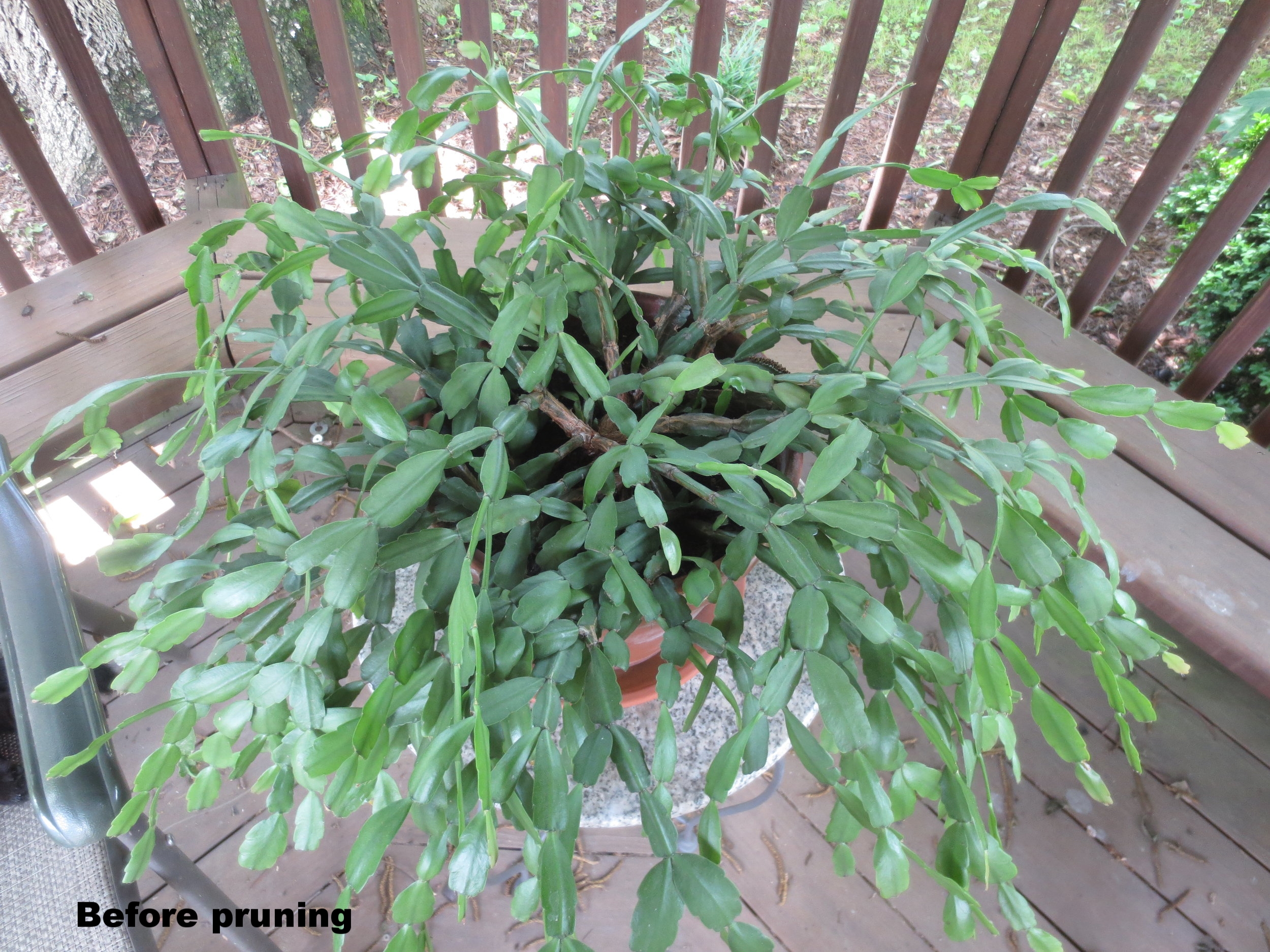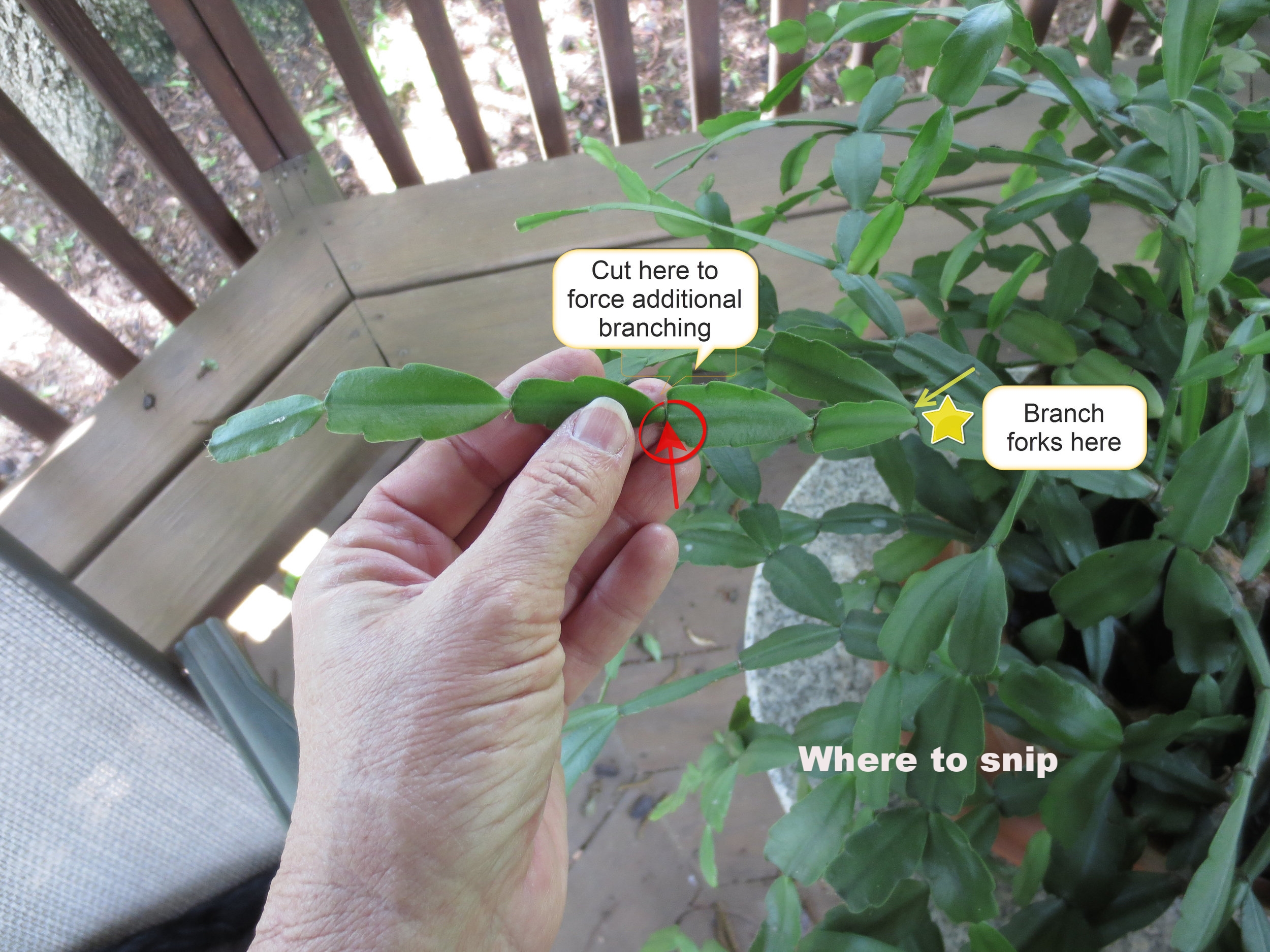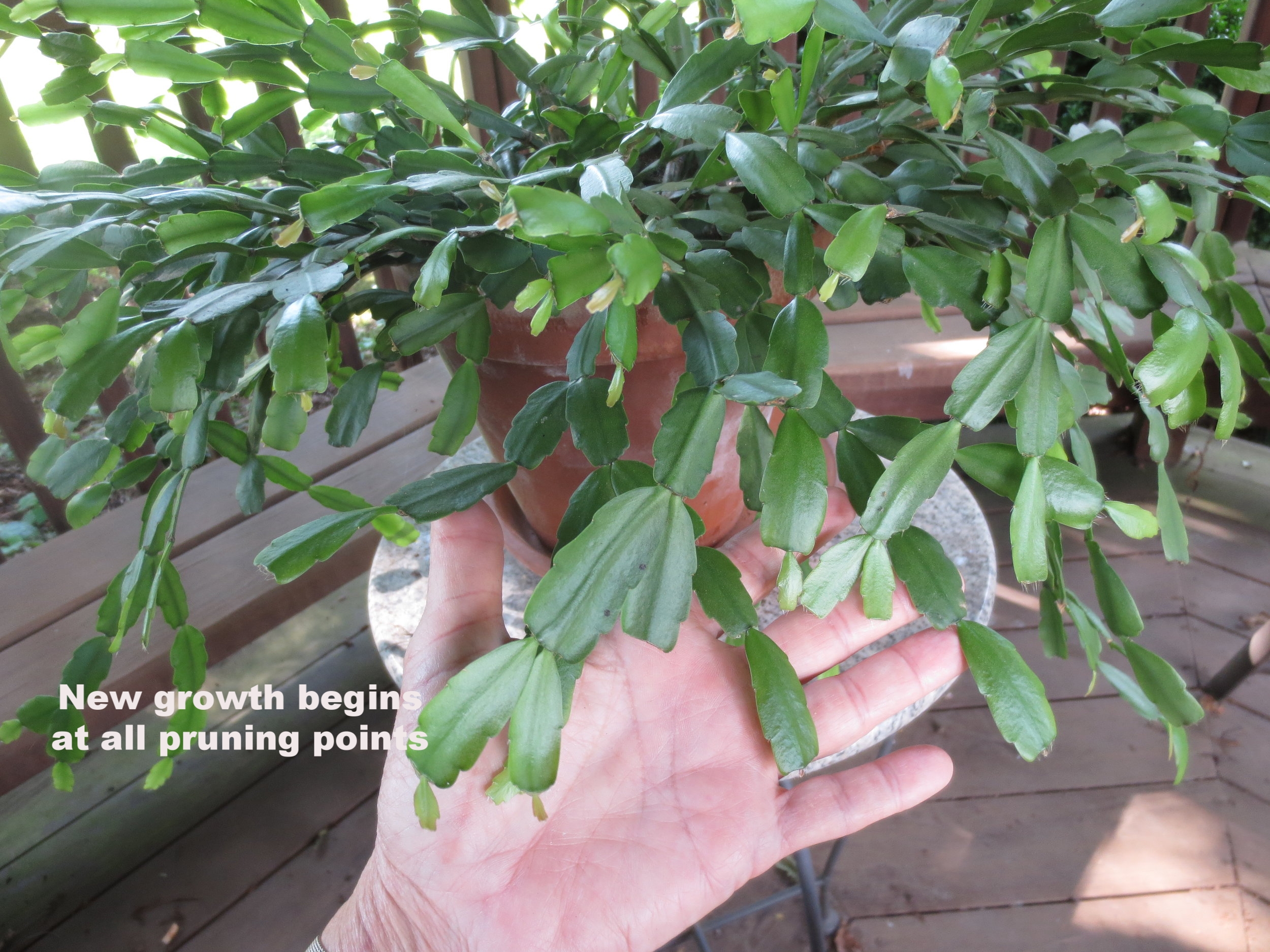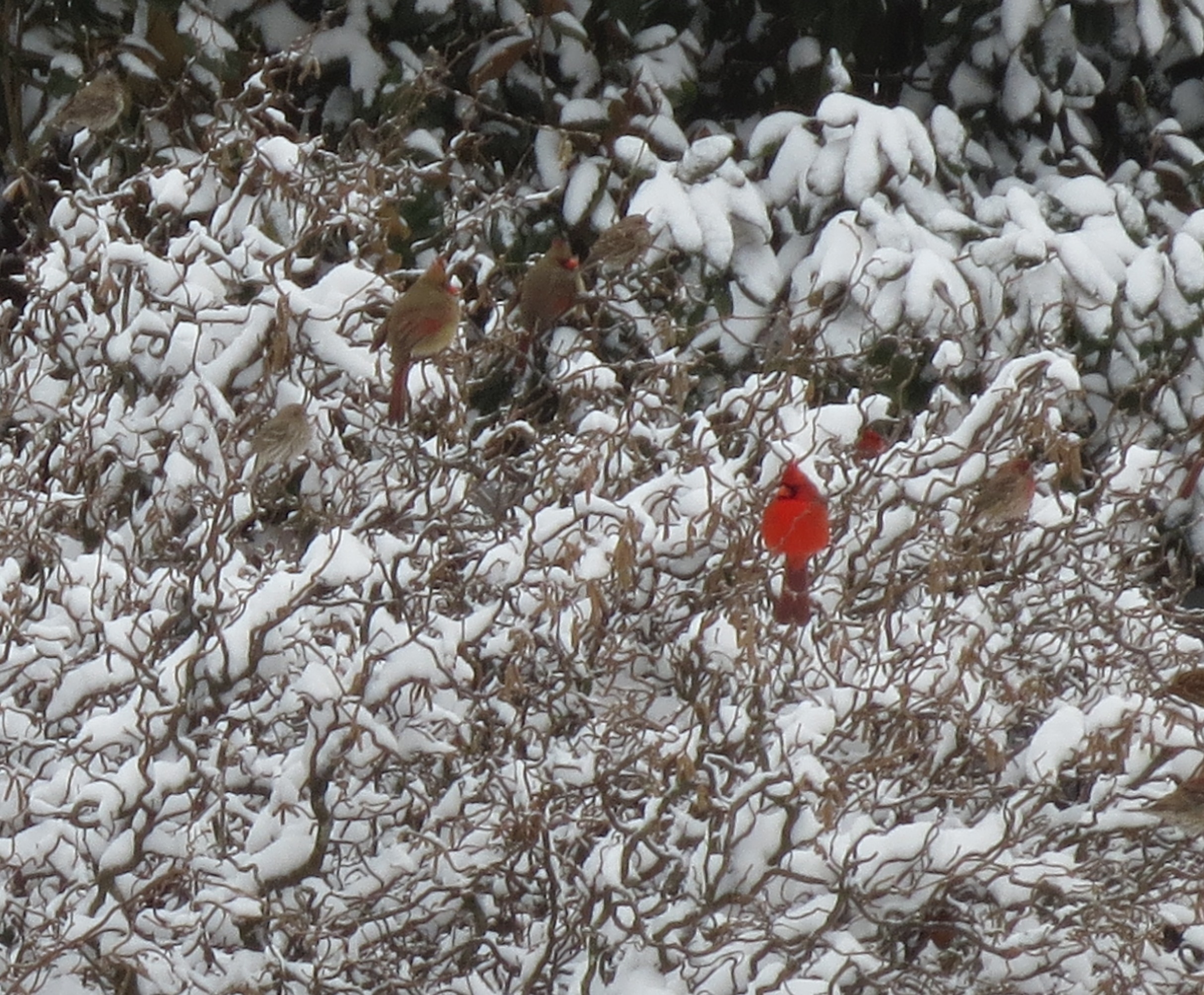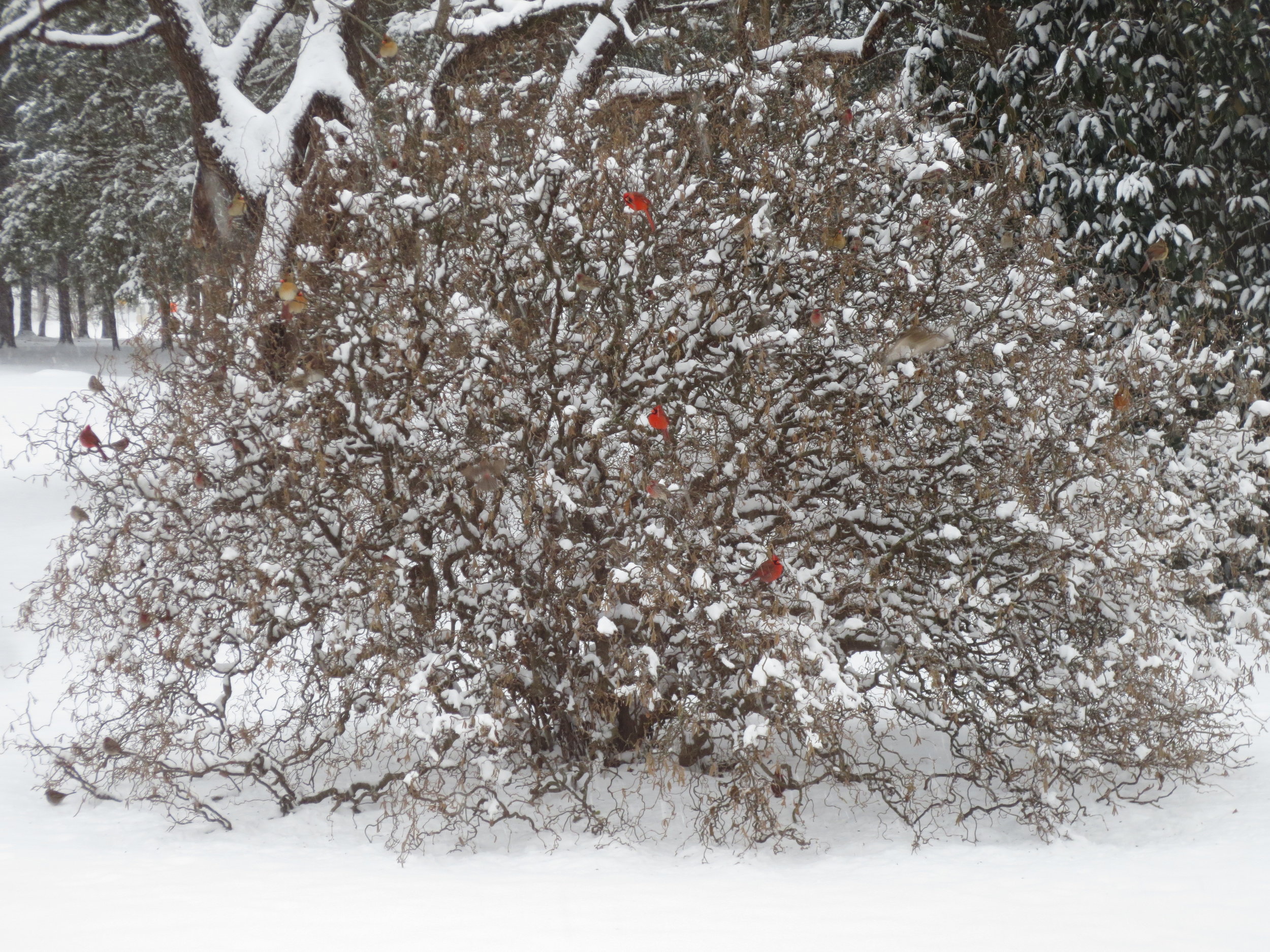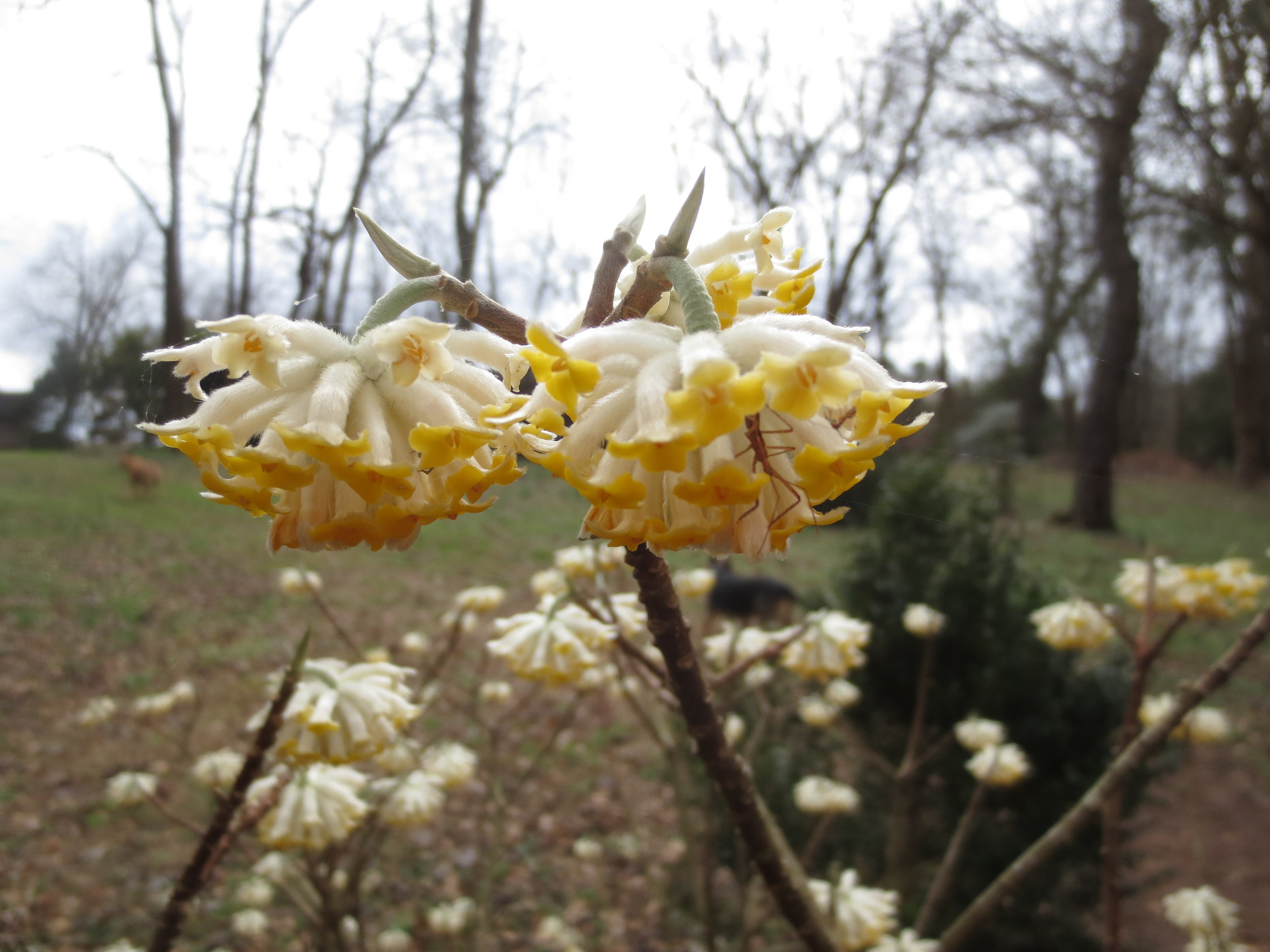It’s time to start preparing your Christmas Cactus to look its best for the holidays. Schlumbergera (why, Linnaeus, why?) has been eclipsed by the poinsettia as the leading holiday plant, but it is certainly easier to maintain.
The “cactus” part of the name might lead one to believe that they prefer hot, dry air and poor soil. Not true! While it’s necessary to avoid a water-logged soil, plants do best in a free-draining potting soil, moderate temperatures and high humidity. I repot with fresh soil every other year.
When spring night temperatures stay above fifty degrees, I move my Christmas Cactus outdoors to a table in my gazebo, where it receives bright light but no direct sun. In an unglazed terracotta container, I find a watering schedule of every five days is about right, but you will need to adjust your schedule to reflect your container porosity, heat, wind and light exposure. Those “veins” running down the middle of each leaf will become more prominent if your plant is thirsty. If you ignore the first signal, leaves will start to shrivel. I’ve neglected mine to the shrivel point a couple of times and it has survived anyway.
The branches of an older plant can reach five feet or more, which usually places its tip-of-the-branch blooms around ankle level. Some gardeners like this look, and elevate their plants to bring attention to the impressive lengths. This waterfall appearance does not appeal to me. I prefer a fuller plant with shorter branches. One of my Master Gardener cohorts, Elaine, told me that aggressive pruning was the ticket out of droopy-ville. I’ve followed her recommendation with great success.
Somewhere between May and August, select the longest branches. Look for a fork, leave one segment past the fork intact, and pinch/snip/prune off the longer piece. The plant will regenerate with new growth. Many times the pruning results in multiple branches, meaning the plant looks fuller. I was hesitant during my first year, worried that I might over-prune. Now I snip away with abandon and give the sheared plant a spritz of liquid fertilizer to encourage that new growth. The pieces you removed will take root easily. Place six to nine in a 4-inch container and by Christmas, you may have nice, full extras to share with your friends.
If you move your plant outdoors for the summer, be sure to bring it back inside before night temperatures drop below 50 degrees. Check for insects to be sure you don’t bring unwelcome visitors into your home. Place it in a bright location without direct sunlight and avoid drafts. Cool season water needs are much less than summer time, but I mist weekly to keep the humidity high.
Bud-set and blooming are dictated by the amount of light a plant receives. If you are trying to force yours into bloom on a specific timetable, the internet is awash with detailed instructions. I ignore all the engineering and let nature take its course.
Properly maintained, these succulents will be with you for years or even decades. The accompanying photos illustrate a plant before pruning, immediately after pruning, and eight weeks after pruning. This plant came to New Hope Farm as a gift from my younger stepson to my mother-in-law in 1989. I took ownership in 2005. It still blooms beautifully.
